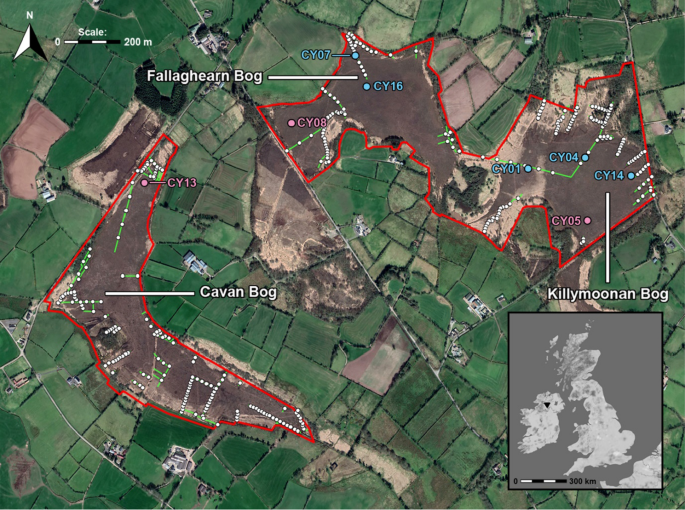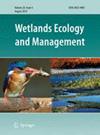土地变形虫组合对泥炭地排水阻塞的响应
IF 1.6
4区 环境科学与生态学
Q4 ENVIRONMENTAL SCIENCES
引用次数: 0
摘要
泥炭地是全球重要的栖息地和碳储存库。然而,人类影响和气候变化给泥炭地的管理带来了重大挑战。泥炭地生境及其水文完整性的退化日益通过泥炭地的恢复得到抵消,包括重新润湿和堵塞排水。关于这种管理干预如何影响泥炭地微生物组合的研究是有限的。在这里,我们研究了在英国北爱尔兰的三个小型低地养殖沼泽中,无状态变形虫(泥炭地水文条件的单细胞变形虫原生生物指标)对排水阻塞的反应。除了远离大坝阻塞的控制点外,我们还在大坝附近的集中水流区域附近取样了水藻。这些修复措施在修复后显示出复杂但有意义的结果。我们观察到水坝阻塞后的几个关键发展:(1)物种多样性增加;(ii)明确的湿指示类群在坝址的丰度呈增加趋势;(iii)和传递函数重建的地下水位深度显示了坝址的湿润状况。这些发现表明修复后的条件更湿润,常规监测显示地下水位深度没有明显的趋势。我们没有发现统计上显著的组合水平对实验或环境变量的响应,这可能与研究期间的先前条件和显著干旱期有关。因此,在更好地了解其对恢复的组装水平反应之前,建议谨慎使用遗属变形虫作为生物适应症。尽管如此,这项研究强调了一种基于指标分类群的方法的潜力,该方法将遗属阿米巴虫作为泥炭地恢复的当代生物指标,特别是在恢复后的短期时间尺度上。本文章由计算机程序翻译,如有差异,请以英文原文为准。

Response of testate amoeba assemblages to peatland drain blocking
Abstract Peatlands represent globally important habitats and carbon stores. However, human impacts and climate change leave peatlands with a substantial management challenge. Degradation of peatland habitats and their hydrological integrity is increasingly counteracted through the rehabilitation of peatlands including re-wetting and drain blocking. Research into how such management interventions affect peatland microbial assemblages is limited. Here, we investigate the response of testate amoebae (established unicellular amoeboid protist indicators of hydrological conditions in peatlands) to drain blocking on three small lowland raised bogs in Northern Ireland, UK. We sampled Sphagnum adjacent to areas of focused flow near sites of damming in addition to control sites away from dam blocking. These restoration measures show complex but meaningful results after restoration. We observe several key developments following dam blocking: (i) species diversity increases; (ii) unambiguous wet indicator taxa appear in increasing abundance at dammed sites; (iii) and transfer-function reconstructed water-table depths show wetter conditions in the dammed sites. These findings imply wetter conditions after restoration, where routine monitoring presented no clear trend in water-table depths. We found no statistically significant assemblage-level response to experimental or environmental variables, which may be related to antecedent conditions and significant periods of drought during the study period. Thus, caution is advised when utilising testate amoebae for bioindication until their assemblage-level response to restoration is better understood. Nevertheless, this study emphasises the potential of an indicator-taxa based approach to applying testate amoebae as contemporary bioindicators of peatland restoration—particularly on short-term timescales immediately following restoration.
求助全文
通过发布文献求助,成功后即可免费获取论文全文。
去求助
来源期刊

Wetlands Ecology and Management
ENVIRONMENTAL SCIENCES-WATER RESOURCES
CiteScore
3.60
自引率
5.60%
发文量
46
审稿时长
>12 weeks
期刊介绍:
Wetlands Ecology and Management is an international journal that publishes authoritative and original articles on topics relevant to freshwater, brackish and marine coastal wetland ecosystems. The Journal serves as a multi-disciplinary forum covering key issues in wetlands science, management, policy and economics. As such, Wetlands Ecology and Management aims to encourage the exchange of information between environmental managers, pure and applied scientists, and national and international authorities on wetlands policy and ecological economics.
 求助内容:
求助内容: 应助结果提醒方式:
应助结果提醒方式:


